The Scott’s Run Memory Project
Posted by Jane Metters LaBarbara.April 29th, 2019
Blog post by Lori Hostuttler, Assistant Director, WVRHC.
In 2018, the WVU Humanities Center funded a project to explore the memories of the Scott’s Run community through oral history and photography. For the project, grant team members chose a set of historical images of the Scott’s Run area from the West Virginia & Regional History Center’s online photographs database, West Virginia History OnView. Over a series of interviews with community members who gather every Saturday at the Scott’s Run Museum, team members recorded residents’ memories and observations derived from viewing the selected photographs.
The Scott’s Run area consists of a five-mile stretch of communities in Monongalia County, adjacent to Morgantown, WV. These communities include Osage, Pursglove, Jere, and Cassville among others. During the early 1900s the area saw a booming mine industry, particularly as World War I increased the demand for coal. This was a major shift from its agricultural roots and as land was sold from farmers to coal companies. Scott’s Run was well positioned for this industry given its coal resources, access to river ways and railroads, and proximity to Pittsburgh.
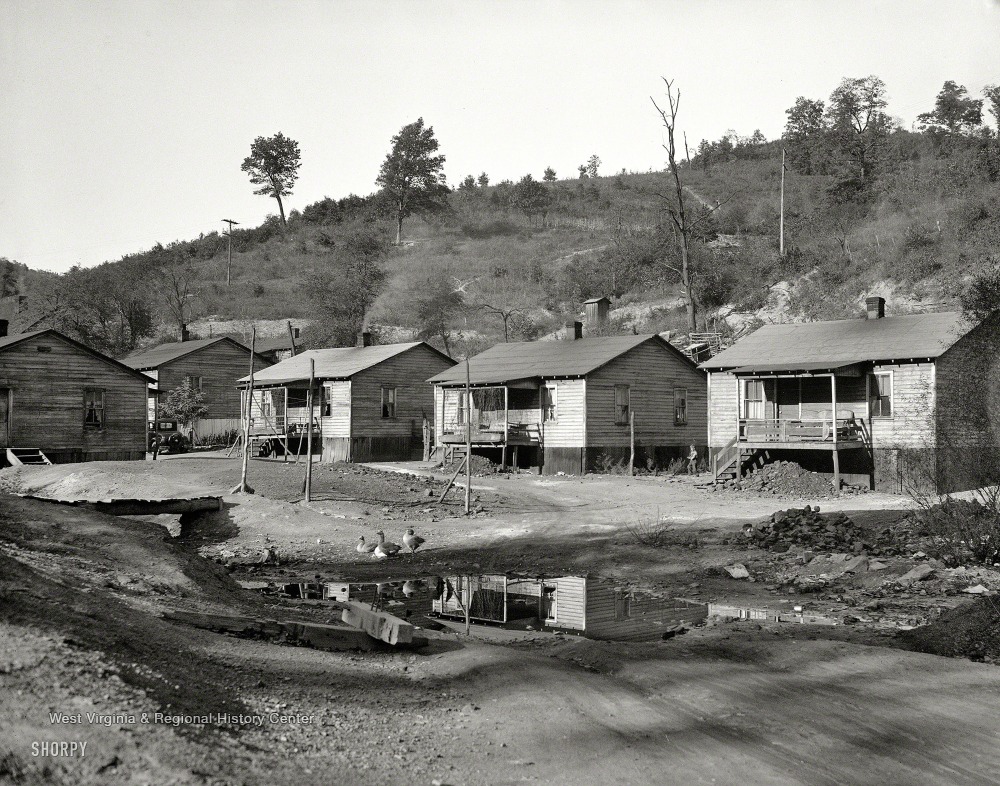
Coal miners’ homes at Scott’s Run, ca. 1940.
The workforce in this area expanded and was uncharacteristically diverse, including immigrants from twenty or more countries and African Americans. About sixty percent of the population was foreign-born and twenty percent were African American. Many were recruited by agents from the South and from Eastern Europe. Local men also joined the coal labor force as agricultural work had declined. The Great Depression of the 1930s, however, saw a deflation of this industry and hit Scott’s Run particularly hard. First Lady Eleanor Roosevelt visited the area in 1933 and was deeply saddened and moved by the experience leading to the creation of the Arthurdale experimental community.
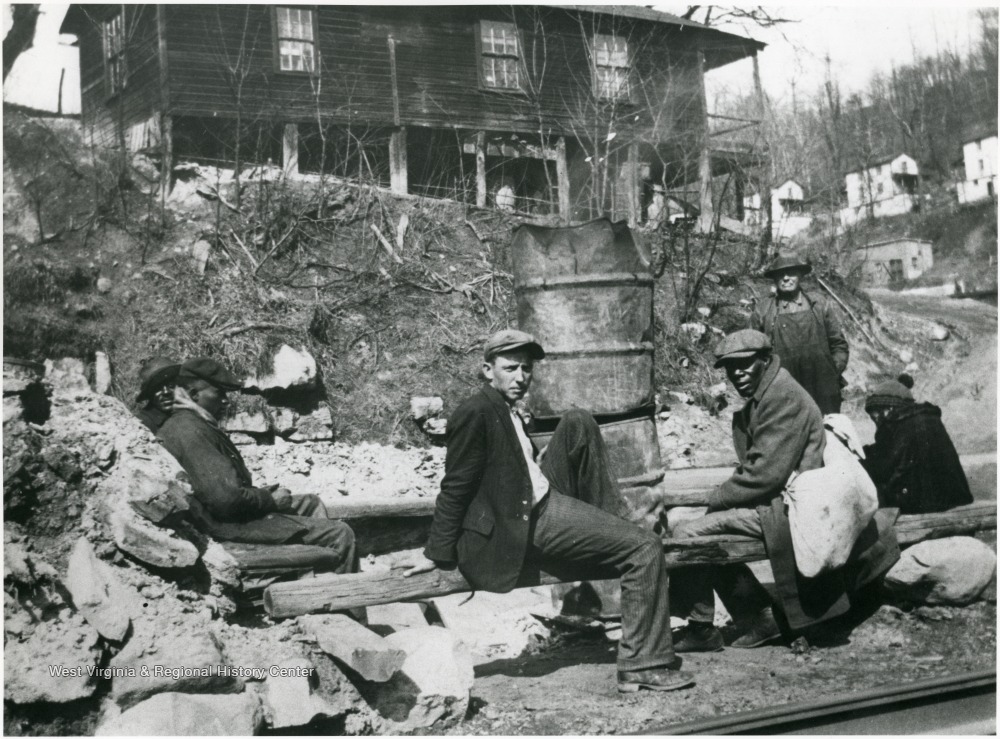
Picket Line at the Pursglove Mine, ca. 1933 Scott’s Run residents reacted to this image saying “Up above there is a row of houses. There was a black house, then a white house, then two black houses… The houses were owned by the coal company and rented for $8 a month” and when miners came out of the mines, “they were all black” (with coal.)
The area and its plight also drew the attention of Walker Evans and other famous photographers. Documenting the conditions and lives of those living in rural America was sponsored during these times by the Farm Security Administration (part of the USDA). The Scott’s Run area became one of the faces of the economic misery in the coalfields.
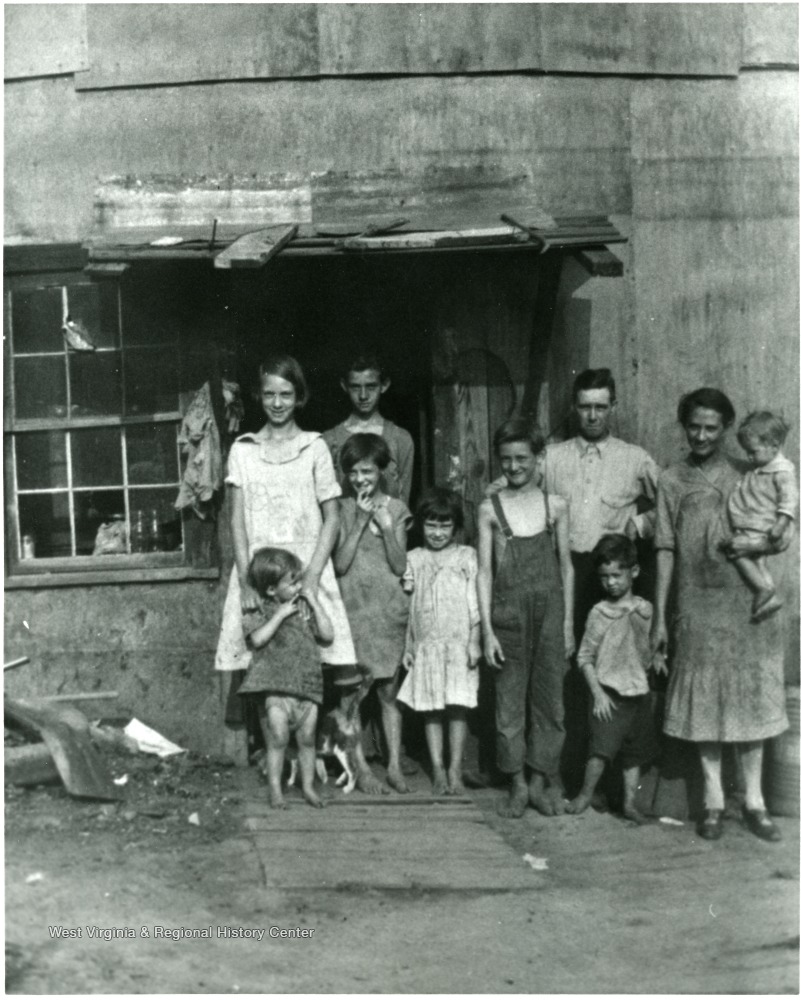
This image was labeled as “Typical Family at Scott’s Run.” Residents responded “there really wasn’t a typical family.”
Federal relief efforts (such as those associated with the New Deal) also began at this time, although this was after state and local agencies had exhausted almost all of their resources. Even during the coal boom this community suffered from problems such as lack of access to health care and poor sanitation. The years continued to be unfavorable to the Scott’s Run area. During the 1940s the area experienced a series of mine disasters and the growing development of machines to mine decreased the need for human labor. Other technologies (such as those used in powering locomotives) reduced the need for coal in general.
During the past century, churches and the organizations they sponsor have played a major role in Scott’s Run community. As an initiative of the United Methodist Church, Scott’s Run Settlement House was founded in 1922. Although beginning as a bible school, it grew to provide classes geared toward immigrant families such as naturalization. Not long after, the Presbyterian Church began similar efforts in the community, resulting in an organization called “The Shack Neighborhood House” in 1932.
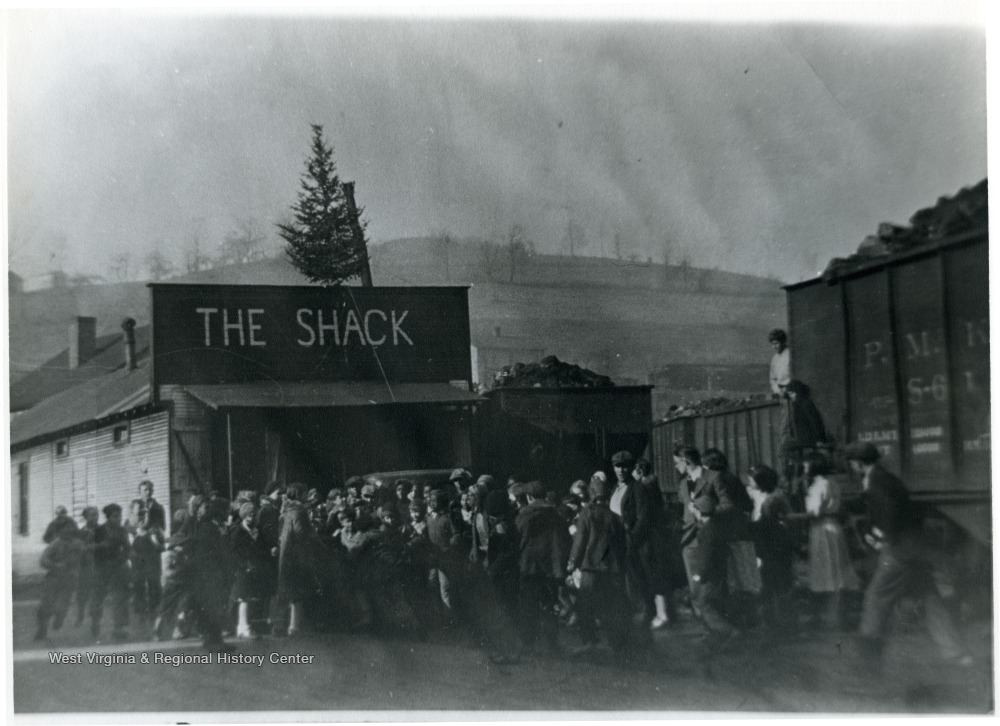
A Christmas Party at the Shack, ca. 1940. Resident’s recalled, “I grew up at the Shack.” “It was our social life…there was nothing else.” “We lived at the Shack.” “They had separate programs for the races. On Wednesday half of the day was for white kids at the pool and the other half for black kids.”
The Shack and Scott’s Run Settlement House remain an integral part of the community and continue to provide outreach to immigrants. St. Ursula’s Food Pantry is operated by the Catholic Church and also provides critical services in this community. These organizations provide food assistance, child care, baby clothes and other items, as well as home repair, social programs, and other key services for persons of all ages in this community and the surrounding county.
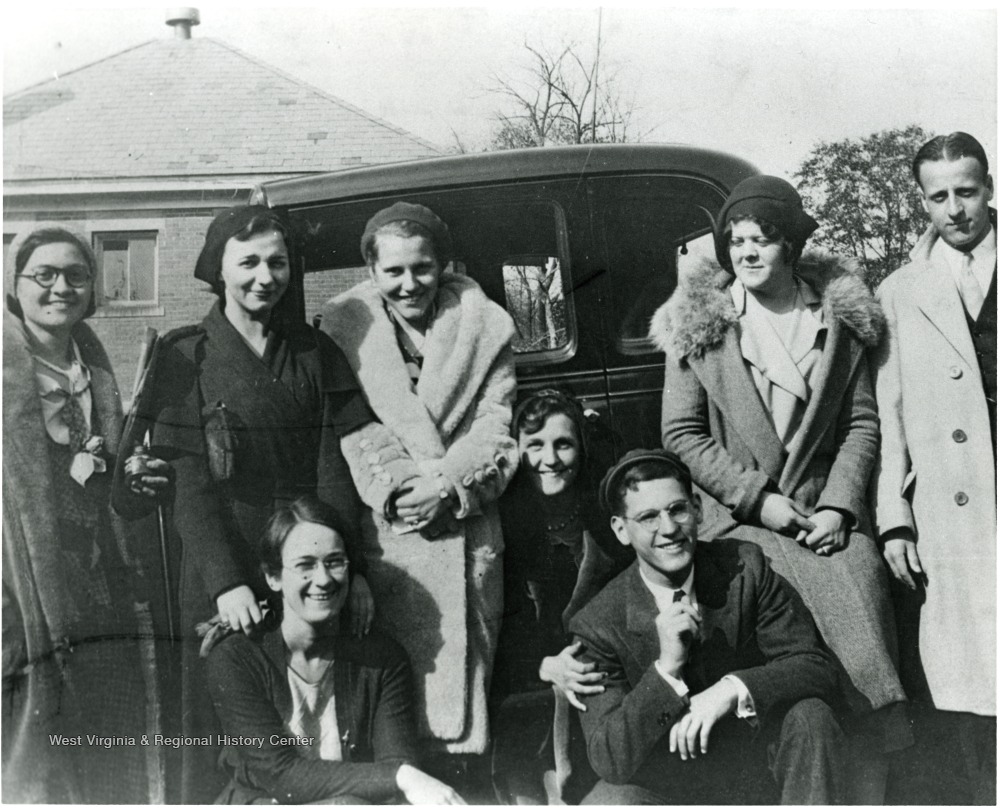
Photograph of the First Group of Sunday School Teachers at Scott’s Run, ca. 1930. When residents saw this image their thoughts turned to how people would dress up and go out on Saturday nights rather than church or Sunday school.
Today, Scott’s Run is very different from the days of the coal boom. Since the coal bust, the population has dropped significantly. Currently, 255 people live in Osage and 1,111 people reside in Cassville. The residents and the organizations that serve the area are committed to preserving the rich history and building a future for Scott’s Run. In addition, several projects have formed to tell their past and present stories (i.e. the Scott’s Run Writing Heritage Project and the Songs and Stories of Scott’s Run).
The Scott’s Run Museum celebrates and preserves the history of coal and the coal boom era in the communities that make up Scott’s Run and encourages growth and development in the area. Since the Museum opened six years ago, each Saturday, current and former residents of the community gather for fellowship and to share stories of their past.
Hear the voices of Scott’s Run residents in this video:
The grant team consists of Catherine Gouge, Associate Professor, Department of English; Kristina Hash, Professor, School of Social Work; Lori Hostuttler, Assistant Director, West Virginia & Regional History Center; Tamba M’bayo, Associate Professor, Department of History; Christine Rittenour, Associate Professor, Department of Communication Studies; Tyler Redding, student in the School of Social Work and Honors College.
A physical exhibition featuring some of the images and selected quotes from the participants is on display on the 6th floor of the Downtown Campus Library near the front elevator.






June 17th, 2019 at 11:01 am
[…] the research was compiled into a video and an exhibit that has been donated to the Scott’s Run Museum where it will be permanently […]
November 18th, 2019 at 10:42 am
Fascinating! I was born in Osage in 1957. My Grandmother owned a house on Chaplin Hill and I was born in that house.
Vicki Leighty
December 13th, 2019 at 12:39 pm
I was born in Osage, WV (8-14-1951) in my grandmothers house directly over the hill from the Osage School. I went to school at at the Osage School. (MY first grade teacher was Mrs Maxwell) My fathers name is oh the Honor Roll outside of the Osage School. (Frank Fata) My Grandfather (Mike Fata) worked on the Monongahela Rairoad. My Father also operated a Service Station close to the Bridge. I lived behind that Gas Station, and I also lived at the very top of Osage Hill (the entrance ramp (I79) took the home we lived in. My Aunt and Uncle still live in Osage, Owner of Ervins Towing that is just by the Bridge. I remember the Engine Yard where the trains would be for the evening. My Aunt and Uncle owned Solomon’s Market there for many years. I still enjoy the Area whenever I can come HOME.